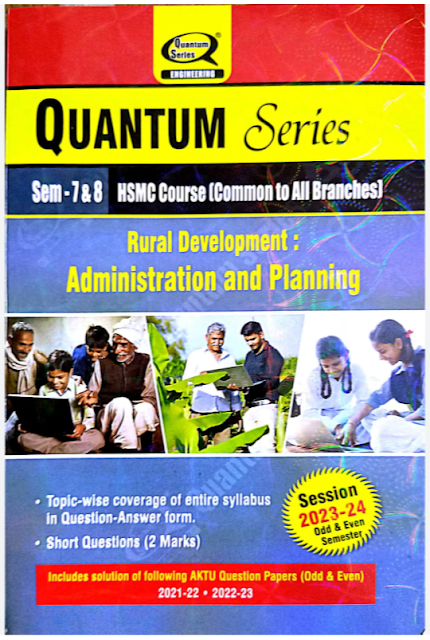Rural Development and Administration Planning Quantum | Common to All Branches | B.tech AKTU Quantum | Semester - 7 & 8
Rural Development and Administration Planning Quantum | Common to All Branches | B.tech AKTU Quantum | Sem- 7 & 8
Boost Your AKTU Exam Scores with Quantum Study Material -
Feeling unprepared for your AKTU semester exams? AKTU Quantum study material can be a significant marks booster, even if you haven't studied extensively throughout the semester. These resources are designed to save you valuable time in the crucial moments leading up to your exams.
Whether you're starting early or cramming last-minute, AKTU Quantum provides a helpful and efficient way to cover the syllabus. The complete curriculum is mapped within, giving you a clear understanding of the essential topics. But AKTU Quantum isn't just for last-minute preparation. Even at the beginning of the semester, these guides offer a fantastic roadmap to your studies. The entire syllabus is organized, providing a comprehensive overview of the topics you need to master. Each chapter includes topic-wise questions and answers, along with highlighted important questions at the end. You'll also find all the relevant short answer questions compiled at the end of the Quantum.
Get Your PDF: Click the " Download PDF " button, given below to access this valuable study material. If you encounter any issues, refer to the "how to download" section.
Preview Before You Download: Scroll down for a preview a sample of the AKTU Quantum to ensure it's the right resource for you. So, you can decide if it meets your needs, respecting your time and data.
Related Topic:
1. Digital and Social Media Marketing Quantum
3. Rural Development and Administration Planning Quantum
How to Download:
To download the PDF, click the "Download PDF" button at the bottom of the page. The PDF will start downloading. (OR)The PDF will likely open in a new tab or window. Look for the download icon (arrow down) in your browser's PDF viewer or find the "Download" option under the "File" menu (if in Google Drive). Click the download icon and choose where to save the file.

Comments
Post a Comment
Leave your comment